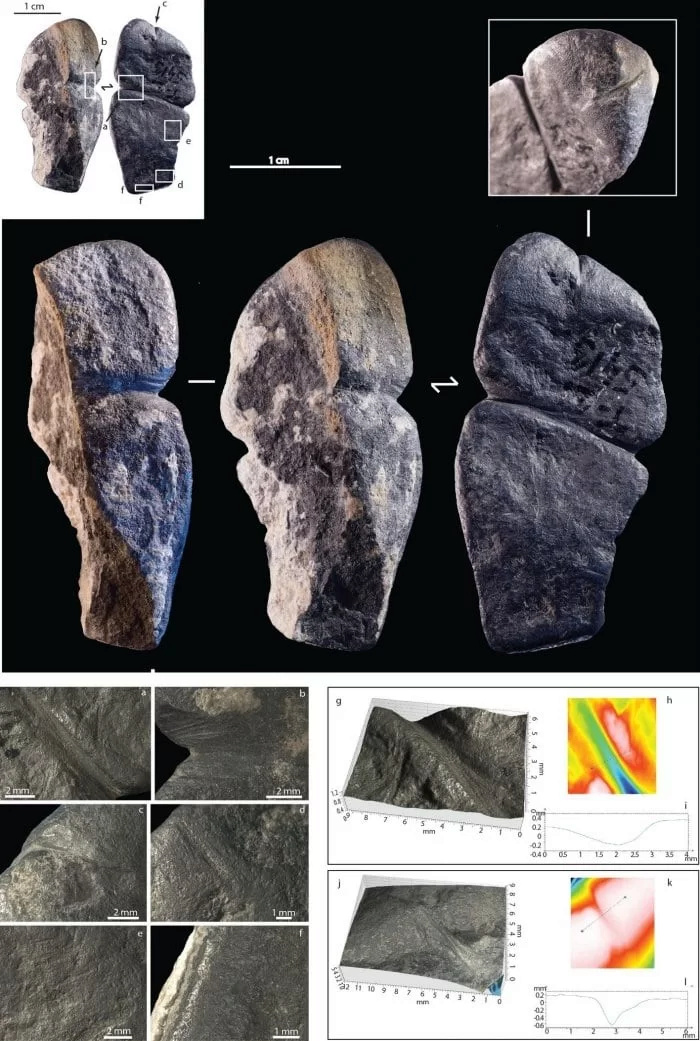A 42,000-Year-Old Pendant Discovered in Mongolia Could Be the Earliest Phallic Art Ever Found by Archaeologists

It may predate the oldest known representations of human sex organs by 2,000 years.
A Paleolithic-era artifact discovered in Mongolia in 2016 may be the earliest instance of phallic art yet to be discovered. The pendant was likely tied with a string around the wearer’s neck. It was found at the archaeological site known as Tolbor, in the Northern Khangai Mountains, which dates back about 42,000 years.
The artifact measures not quite two inches long, and is made from graphite. Since that material wasn’t widely available in the area, the archaeologists who found it suggest it may have come from far afield. The pendant is quite worn, suggesting it may have been passed down among generations.

“Three‐dimensional phallic pendants are unknown in the Paleolithic record, and this discovery predates the earliest known sexed anthropomorphic representation,” say the authors of a paper on the find published in Nature Scientific Reports this month.
“Our argument is that when you want to represent something abstractly, you will choose very specific features that really characterize what you want to represent,” University of Bordeaux archaeologist Solange Rigaud, the paper’s lead author, told Science magazine. Viewed through this lens, the clearest pieces of evidence for the artifact representing a penis are the distinction between the glans and the shaft and the representation of the opening of the urethra.

Not all experts are convinced. Boston University archaeologist Curtis Runnels told Science he “would need to be convinced” that this “small and rather shapeless object” was intended to sumbolize a penis.
But University of Bordeaux anthropologist Francesco D’Errico, who was not involved with the research, is supportive of the authors’ interpretation, telling Science, “I think the interpretation holds.”
Other famous representations of human sex organs, showing vulva, are found in the cave art at Grotte Chauvet in France, but those only date back around 32,000 years, according to Science magazine. The Venus of Hohe Fels, meanwhile, depicts the female figurine’s genitalia and dates back some 40,000 years. So the newly discovered pendant may be the oldest such art by two millennia.
Source: websites

